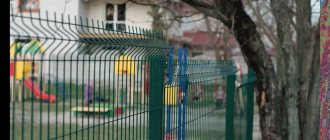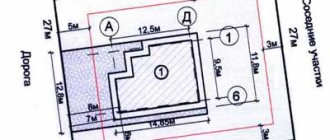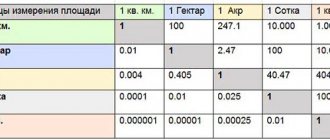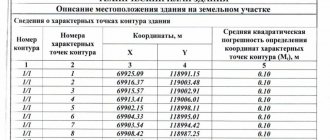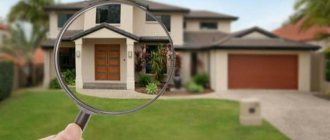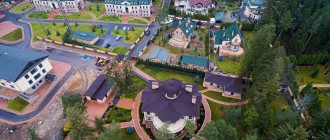What could be better than relaxing in nature, away from the bustle of the city, work, and polluted air? Having your own country property is the dream of many. And most often it all starts with the purchase of a plot.
Now the moment has come, you bought a plot, but what to build on it? The suburban housing market is very specific and, unlike urban housing, is not so standardized. What are the differences and where is the line between a cottage and a private house, a country house and a mansion?
Despite the fact that there are no clear distinctions between these concepts in the legislation, in certain qualities all these real estate objects are fundamentally different from each other.
General definitions
Dachas are buildings intended for family living mainly in the warm season. They rarely have heating or running water (water is taken from wells) - only electricity is enough. In the areas surrounding them, which are usually small in size, greenhouses are set up, vegetable gardens, agricultural plants, and fruit trees are planted.
A private (country) house is a building that is used either for periodic residence at any time of the year, or for permanent year-round residence (permanent residence). Therefore, they are equipped with heating, water supply and sewerage systems. In colloquial use, a house is a generalized concept that refers to any, even non-residential, buildings.
Relatively recently: some 20-30 years ago, a new format of country housing appeared in Russia - cottages . Today they are very common, especially near large cities and metropolitan areas. With the difference that if earlier cottages were built on 1.5-2 floors with an attic, today it is no longer uncommon to see 3- and even 4-story buildings, which can safely be called full-fledged mansions .
Let's take a closer look at the main features of each type.
Differences between a cottage and a villa
Many people have heard the concept of villa more than once . How does a cottage differ from a villa, and is it possible to compare them at all? Both the villa and the cottage are country houses with an increased range of living amenities.
Only a very wealthy person can own a villa; it has a huge number of rooms and its area is more similar not to a cottage, but to a mansion.
The villa always has a swimming pool, a terrace, a greenhouse and a well-equipped local area. You don't have to have all this luxury in a cottage.
A villa is often built to receive a large number of guests or to host private events of clubs or some societies . Moreover, most often villas are built in resort areas, on the seas or other beautiful places in the world.
Owners rarely live there permanently, more often using villas for vacations or special events.
If the owner can look after the cottage on his own, then to care for the villa he will have to hire a whole staff of workers: gardeners, cleaners, cooks, security guards.
Cottages and garden houses
Garden (country) houses are built for temporary residence during the warm season. The owners can also come there to relax on their days off. This is the most budget option for suburban real estate.
It should be noted the main tasks of country houses and the advantages of their construction:
- ensuring comfortable seasonal accommodation for the whole family;
- planning garden houses takes much less time and financial resources compared to other types of country housing;
- the construction of a summer house requires much less materials;
- they are usually built on small plots of land, leaving more space for planting trees and agricultural crops.
This is also the most popular format in Russia. You can find advertisements for the sale of plots and real estate in holiday villages everywhere.
Since dachas are not equipped with air conditioning systems, to protect them from the heat, small windows are installed, sun awnings and awnings are used, and dense trees are planted nearby for shade.
Pros and cons of the cottage
Cottages have many advantages for purchasing them . They have a large area where large families with children can live freely. All necessary communications for life in such houses are present; you can even clean the house and maintain it yourself without the involvement of hired personnel.
Cottages look more attractive in comparison with ordinary private houses. On large plots, you can not only farm and plant a vegetable garden, but also decorate the area with decorative plantings.
Cottage villages have everything - shops, beauty salons, gyms. They are easily accessible by public transport. The entire territory of the village is guarded around the clock, and here you can feel completely safe.
The only disadvantage of cottage buildings is the high price . They cost much more than private houses or townhouses. Utility bills in such cottages also exceed standard rates.
Typically, cottages are built according to standard layouts. Therefore, if you want to arrange your home in your own way, it is better to purchase a private house or build it yourself.
Owners of cottage communities often put forward strict requirements for cottage residents in terms of arrangement of the local area, which must be decorated in the same style. It will not be possible to engage in amateur activities here; for this it is better to build your own personal house.
A cottage is a popular type of private construction, suitable for large families outside the city . There is everything you need for life, but the cottages cost many times more than ordinary apartments or townhouses. A cottage is suitable for those who are used to living in grand style, but do not like to stand out from the crowd.
Country houses
One-story or two-story country houses are being built both in various settlements (for example, in villages) and on the territory of cottage and holiday villages. As a rule, they are purchased on the secondary housing market.
Communications in country houses may or may not be provided. And attics and attics are equipped in them as separate living rooms or offices. However, if the owners plan to live there in winter, care should be taken to insulate the walls, supply water supply, electricity and organize heating before moving in.
History of cottages
The term "cottage" is of English origin. Now it is found all over the world. Literally this name translates as a one-story house with an extension in the form of an attic.
In different countries, the term “cottage” meant buildings with different purposes:
- Luxury homes for the upper class first appeared in ancient Rome: cottages were intended only for the nobility.
- In England, cottages were originally called houses with a plot of land, which were intended for agricultural workers. In the 16th and 17th centuries, after the establishment of England as a colonial state, luxurious country estates appeared. Since then, houses for the rich class began to be called cottages.
- In ancient France, a cottage was a strong building that was located at a distance from others.
- For the population of Scandinavia and Eastern Canada, a cottage is a summer vacation home that is located near a river.
- Cottage villages in Russia began to be built during the reign of Peter I - the tsar gave his favorites plots of land on which they built country houses. Construction of this type of housing resumed in the 90s, after the collapse of the Soviet Union.
Currently, cottages are increasingly being built within the city and serve as a place of permanent residence, and not just a country holiday, as was previously the case.
Cottages
If the owner of the land wants to have a spacious suburban home that can easily accommodate all family members and their guests, the best option is to build a multi-story cottage.
Modern cottages are built on at least 2 floors; they have several bedrooms and bathrooms, and the top floor is often designed as an attic.
The main materials for construction are:
- brick - such cottages are durable and durable, although they are not cheap;
- natural wood - perfectly preserves the microclimate and is inexpensive, you can save on facade and interior decoration, but additional protection from insects, rodents, fungi and other harmful microorganisms is necessary;
- foam blocks are a durable material, but the downside is that they are expensive, resistant to moisture and snow, and require external finishing.
Basic design decisions
Small cottages are especially popular in Western Europe. In England they are built in 3 or 4 floors, rectangular in appearance with a gable roof. French layouts are distinguished by spacious adjacent areas. They are equipped with playgrounds, swimming pools, tennis courts, etc.
In our country, Spanish-type cottages are more popular. They are distinguished by large windows with arches, the presence of columns, a lot of space, a large amount of marble - all this is typical for mansions in Spain.
The main advantages of European-style cottage houses:
- they are built from inexpensive materials of the highest quality;
- the premises maintain a healthy microclimate and environmental safety (this is very important when there are children in the family);
- There are many options for ready-made projects to choose from, but if the client wishes, the architects will develop an individual design project;
- The spaces inside the buildings are arranged organically and conveniently.
Cottage concept
A cottage is a low-rise residential building in an urban or rural area on a separate plot of land, intended for one family. Moreover, they can live in it permanently or temporarily, as they wish.
The house should not have more than 3 floors; as a rule, it is limited to 1 or 2 floors.
Cottages in Russia have distinctive features:
- They usually have 2 floors.
- The first floor is allocated for the kitchen and living room, the second for bedrooms.
- All communications necessary for life are connected to the cottage.
- The cottage usually has terraces, attics, balconies or garages.
- The garden plot is beautifully decorated with a special landscape.
- The size of the cottage is average.
Classic building materials for a cottage are red brick or natural stone.
Today in 2021, cottages made of sandwich panels, concrete or wood are increasingly common . Roofs are rarely finished in the classical style with straw, more often with tiles of various types.
Straw in our climatic latitudes is impossible for the use and decoration of residential premises. In addition, it is very dangerous from a fire safety point of view.
The meaning of the term "cottage"
The cottage came to us from England, where it was called cottage . In English, this word means a simple house, most often in the countryside. In our language, this concept more often refers to the huge luxurious private houses of influential and wealthy citizens.
Cottages appeared in our country about 30 years ago; today they are in great demand among the middle class.
Cottages, as a rule, have 4-5 rooms, swimming pools, separate manual areas and luxurious landscape design solutions. Owners of cottages do not skimp on arranging their local area.
History of cottages
The term came, as already noted, from England. The meaning of the word cottage there did not mean luxurious mansions at all, but simple houses. In England, cottages were even built to house workers in villages. They looked like combined terraces.
Originally, the word "cottage" meant a small tenant's house with a barn and garden plot . Already from the 9th century in England, ordinary workers in villages lived in such houses.
More luxurious cottages, closer to modern ideas about such houses, appeared in England already in the 16th century. Then the country became a colonial power, where a class of wealthy rich people began to emerge.
It was at this time that typical luxurious English cottages began to be built. English cottages had specific roofs with many slopes, and the houses were often decorated with climbing plants.
In Russia, the first cottage was built in the 19th century by Prince Boris Vladimirovich near St. Petersburg from imported English materials.
In Soviet times, in the 70-90s, “state farm cottages” began to be built in the country, in which workers living in the fields lived. They were built from sand-lime brick and had plots of land for personal farming.
Now in almost every city in the country there are separate cottage communities for the rich . These are fenced areas in the best ecological areas under round-the-clock security, where every wealthy person builds a cottage as beautiful as he pleases.
Main differences in projects
There are a number of characteristic differences between dachas, country houses and cottages:
- Dachas are rarely built on a large area; usually these are buildings up to 100 square meters. m. The area of country houses is from 100 to 250 sq. m. m., and cottages - 250 - 500 sq. m. Larger buildings are already considered mansions and estates;
- Communications are rarely carried out in dachas, since they are used only for temporary residence. It is not uncommon to find compact generators. In country houses and cottages, usually all communications are present, but not all villages have gas, which is why they use autonomous gas heating or electric boilers;
- In the Moscow region, dachas are usually concentrated at a considerable distance from the city. Country houses are built within a radius of no further than 50-80 km from the Moscow Ring Road. Villages with cottages are most often located 40-50 km from Moscow;
- The adjacent territory of dachas is used primarily as land for planting agricultural crops, and areas near private houses and cottages are used for landscape design and arrangement of additional buildings.
- Country houses are built from inexpensive, most accessible building materials. Private houses and cottages have a more original and high-quality exterior and interior layout.
The difference between a cottage and a mansion
The cottage, of course, due to its large size and luxurious decoration, seems to be a mansion for rich people. But how is a cottage different from a mansion?
Will every wealthy citizen be able to build himself a mansion? The mansion, being a separate type of private residential building, has its own characteristics.
A cottage is a simpler house than a mansion. The mansion has a palace type of structure, very atypical and always unique.
The main distinguishing features of these two types of buildings can be outlined as follows:
- mansions are not limited in number of floors, cottages can have a maximum of 3 floors;
- the area of the mansion can exceed 1 or 2 thousand square meters, which is impossible in an ordinary cottage;
- The external and internal style of the mansion reflects the era of its construction.
In the center of Moscow, everyone can see an example of a typical 19th century mansion - the house of Arseny Morozov.
Alternative options
Relatively recently, a new format of suburban housing came to Russia - townhouses , which can rightly be considered an alternative to the above options.
They are a series of semi-detached 2- and 3-storey houses with common side walls. Each of them has a separate entrance from the street, a kitchen and living room are equipped on the ground floor, and living rooms are located on the upper floors.
For several families, having their own plot, you can consider, as an option, the construction of a duplex . This is a separate building, divided into two parts, with two separate entrances, intended for 2 families. It is not difficult to guess that the main advantage of this option is that the costs for each family will be significantly less than when building a separate house.
Types of cottages
In each country, cottage buildings had their own distinctive features, unique to them. The peculiarities were often explained by the climatic conditions of residence.
The most interesting were the following types of cottages:
- English - rectangular buildings for large families with two exits and a gable roof
- Spanish - houses with openwork and arched windows and doors, with wide roofs that protect from precipitation
- French - they are distinguished by the absence of fences and security; they often have a wine cellar in the basements, and a winter garden inside the building.
American cottages are usually used by their owners only during weekends, holidays and holidays. In Ireland, old thatched cottages still exist in their original form. Today they are actively rented out to tourists during their stay in the country.
Finnish cottages are built exclusively from logs, and almost all of them have a traditional sauna inside.
Which option is better?
Fortunately, in modern construction there are no restrictions on the choice of the type of suburban housing. When planning construction, you can order any design project, be it a country house, a mansion, a cottage or even a townhouse.
You can additionally landscape the area with a beautiful gazebo, an unusual lawn, build a children's playground or a sauna with a swimming pool. Naturally, you cannot do without one or two garages and parking for guests.
It should be noted that building a one-story house will be much cheaper than two or three floors. But at the same time you will get a significantly smaller area and number of rooms. In principle, an ordinary house can always be improved by adding additional floors or upgraded to the level of a cottage. To do this, it is enough to contact experienced specialists.
Did you find this article helpful? Please share it on social networks: Don't forget to bookmark the Nedvio website. We talk about construction, renovation, and country real estate in an interesting, useful and understandable way.
Description of the cottage
The most important property of the cottage is the external treatment with natural materials. In most cases, wood or stone is used for this purpose. Today, the building itself is preferably constructed from inexpensive and high-strength aerated concrete. Sometimes, given the climate of the area, wood can be used as an economical and environmentally friendly building material. In the current cottages, there is a kitchen, living room, bathroom and boiler room on the ground floor, and bedrooms on the second floor. Often a cottage includes additional extensions - a garage for a car and a utility room.
House
To determine the category of a building, you need to have an idea of what a cottage and house look like. According to professional architects, a private house is a residential building located on a certain plot of land.
Some dictionaries interpret the word "house" to mean an ethnic or aristocratic group.
As you can see, the word “house” can have several meanings, it all depends on the context .
For example, if a person says “I’m at home,” this does not mean that he is currently in a separate building. It could be an apartment.
Roughly speaking, the concept of “house” includes both a cave and a hut made of branches. The concept of “house” in modern construction implies residential and non-residential buildings. Synonyms: mansion, estate, estate.
A house can be a building of different sizes, with or without communications, located in a village or standing alone. Brick, wood, concrete and other building materials are used to build houses.
Main advantages of cottages
Recently, when choosing country housing for permanent residence, more preference is given to cottages. Reasons for this choice:
- Wide price range. When building cottages, different building materials can be used, which allows you to adjust the cost of the building taking into account your budget. You can order the construction of both inexpensive and luxury cottages.
- Increased comfort. A large family, including representatives of different generations, can comfortably live in the cottage. This becomes possible thanks to different layouts, a wide choice of areas, the presence of well-thought-out communications and all the amenities.
- Aesthetics. The modern, neat appearance of the cottage itself attracts attention and is inviting, and the characteristic landscape design makes the surrounding area well-groomed and functional.
Subtleties of construction
There are two main options for developing the village.
The lands are allocated for development by the development company. Projects of standard cottages and infrastructure facilities are approved. Plots for individual housing are sold already with buildings.
Second option. According to the general plan, individual plots of land are being sold for individual housing construction. The owners build the cottage themselves according to standard designs. Common areas remain under the management of the housing cooperative or company.
The difference between a house and a cottage is that such restrictions are not imposed on its construction.
brick building
For private brick buildings, the owners independently determine the thickness of the walls and the type of insulation. They choose a heating system, use combined heating options, and install a fireplace in the house.
Brick cottages and townhouses are built according to approved technical standards. It is necessary to comply with construction standards for the thickness of masonry and insulation for the facade. They use one standard heating system, mainly gas boilers.
Interesting. A townhouse differs from a detached cottage in that the houses are located close to each other. Projects of attic-type houses dominate, and costs for materials are reduced. The facades of brick buildings face the roadway. The patio is located at the rear.
Stone house
Natural brick, sawn shell rock, and sandstone are mainly used as structural elements of a stone house. They erect buildings from artificial stone (foam concrete, aerated concrete blocks). These materials have good thermal insulation properties, are affordable, and can reduce construction time.
You may be interested in: Nuances when planning a private one-story house
There are no fundamental differences in the construction of a cottage and a house. When constructing townhouse-type buildings, the consumption of materials is significantly reduced - due to adjacent walls.
Wooden housing
Sawn timber and logs are used as wooden building materials. New technologies for processing materials extend the life of buildings. A popular trend is eco-living.
Wooden cottage villages are built mainly outside the city, in ecologically clean areas with beautiful nature. Unlike a private house, they are built from timber. It's easier to work with him. Designers have developed standard buildings that are popular, including among summer residents.
Buildings made of logs look organically on forested land plots with a preserved natural landscape.
Frame buildings
Structures made of SIP, on a lightweight screw or pile foundation are in demand for two reasons: low cost and speed of construction. Frame buildings are erected in literally 2-3 months. The inner surface is almost ready for finishing.
A frame house is an opportunity to quickly erect a temporary building, which can later be used as a guest building.
Cottage frame settlements are in demand as inexpensive housing outside the city and country houses.
A cottage is also a residential building, but there are differences that make it possible to distinguish it into a separate category.
Excerpt describing the Cottage
Another day or two, and heaven will come... But ah! your friend won't live! And he had not yet finished singing the last words when the young people in the hall were preparing to dance and the musicians in the choir began to knock their feet and cough. Pierre was sitting in the living room, where Shinshin, as if with a visitor from abroad, began a political conversation with him that was boring for Pierre, to which others joined. When the music started playing, Natasha entered the living room and, going straight to Pierre, laughing and blushing, said: “Mom told me to ask you to dance.” “I’m afraid of confusing the figures,” said Pierre, “but if you want to be my teacher...” And he extended his thick hand, lowering it low, to the thin girl. While the couples were settling down and the musicians were lining up, Pierre sat down with his little lady. Natasha was completely happy; she danced with a big one, with someone who came from abroad. She sat in front of everyone and talked to him like a big girl. She had a fan in her hand, which one young lady had given her to hold. And, assuming the most secular pose (God knows where and when she learned this), she, fanning herself and smiling through the fan, spoke to her gentleman. - What is it, what is it? Look, look,” said the old countess, passing through the hall and pointing at Natasha. Natasha blushed and laughed. - Well, what about you, mom? Well, what kind of hunt are you looking for? What's surprising here? In the middle of the third eco-session, the chairs in the living room, where the count and Marya Dmitrievna were playing, began to move, and most of the honored guests and old people, stretching after a long sitting and putting wallets and purses in their pockets, walked out the doors of the hall. Marya Dmitrievna walked ahead with the count - both with cheerful faces. The Count, with playful politeness, like a ballet, offered his rounded hand to Marya Dmitrievna. He straightened up, and his face lit up with a particularly brave, sly smile, and as soon as the last figure of the ecosaise was danced, he clapped his hands to the musicians and shouted to the choir, addressing the first violin: “Semyon!” Do you know Danila Kupor? This was the count's favorite dance, danced by him in his youth. (Danilo Kupor was actually one figure of the Anglese.) “Look at dad,” Natasha shouted to the whole hall (completely forgetting that she was dancing with a big one), bending her curly head to her knees and bursting into her ringing laughter throughout the hall. Indeed, everyone in the hall looked with a smile of joy at the cheerful old man, who, next to his dignified lady, Marya Dmitrievna, who was taller than him, rounded his arms, shaking them in time, straightened his shoulders, twisted his legs, slightly stamping his feet, and with a more and more blooming smile on his round face, he prepared the audience for what was to come. As soon as the cheerful, defiant sounds of Danila Kupor, similar to a cheerful chatterbox, were heard, all the doors of the hall were suddenly filled with men's faces on one side and women's smiling faces of servants on the other, who came out to look at the merry master. - Father is ours! Eagle! – the nanny said loudly from one door. The count danced well and knew it, but his lady did not know how and did not want to dance well. Her huge body stood upright with her powerful arms hanging down (she handed the reticule to the Countess); only her stern but beautiful face danced. What was expressed in the count's entire round figure, in Marya Dmitrievna was expressed only in an increasingly smiling face and a twitching nose. But if the count, becoming more and more dissatisfied, captivated the audience with the surprise of deft twists and light jumps of his soft legs, Marya Dmitrievna, with the slightest zeal in moving her shoulders or rounding her arms in turns and stamping, made no less an impression on merit, which everyone appreciated her obesity and ever-present severity. The dance became more and more animated. The counterparts could not attract attention to themselves for a minute and did not even try to do so. Everything was occupied by the count and Marya Dmitrievna. Natasha pulled the sleeves and dresses of all those present, who were already keeping their eyes on the dancers, and demanded that they look at daddy. During the intervals of the dance, the Count took a deep breath, waved and shouted to the musicians to play quickly. Quicker, quicker and quicker, faster and faster and faster, the count unfolded, now on tiptoes, now on heels, rushing around Marya Dmitrievna and, finally, turning his lady to her place, made the last step, raising his soft leg up from behind, bending his sweaty head with a smiling face and roundly waving his right hand amid the roar of applause and laughter, especially from Natasha. Both dancers stopped, panting heavily and wiping themselves with cambric handkerchiefs.
What conclusions can be drawn?
Based on the above, cottages can differ from houses in many ways. The main ones:
- The size of the building, on average, is at least one hundred and fifty square meters;
- Beautiful exterior design, excellent landscaping of the surrounding area;
- Availability of all standard communication systems;
- Large area of land (at least six acres);
- Better exterior facades, roofs, and high-quality interior finishing.
Often, gazebos and beautiful lawns are placed on the territory of the cottage, and separate garages and utility areas are equipped. The main task and main difference between a cottage and a private house is comfort and convenience. The number of floors in a building is not important, from one to three. This is not a key feature of the property, especially considering the fact that recently one-and-a-half-story cottages have become very popular, when one of the parts of the building is higher than the other. Unlike ordinary private houses, cottage owners often equip ground floors and attics, which are unlikely to be found at the dacha of a gardening partnership.
Nuances of choosing a project for a cottage or house
When planning the construction of a house, first of all, you need to take into account your budget, the expected number of residents and the seasonality of residence. These nuances will help you choose a constructive type of housing, excluding options that do not fit the main criteria: cost, type, area, etc.
Qualified construction specialists will help you choose a suitable project taking into account your requirements and capabilities and will further provide professional services to develop its technical and design features.
To get a consultation, call +7 495 984-82-74 or order a call back on our website.

